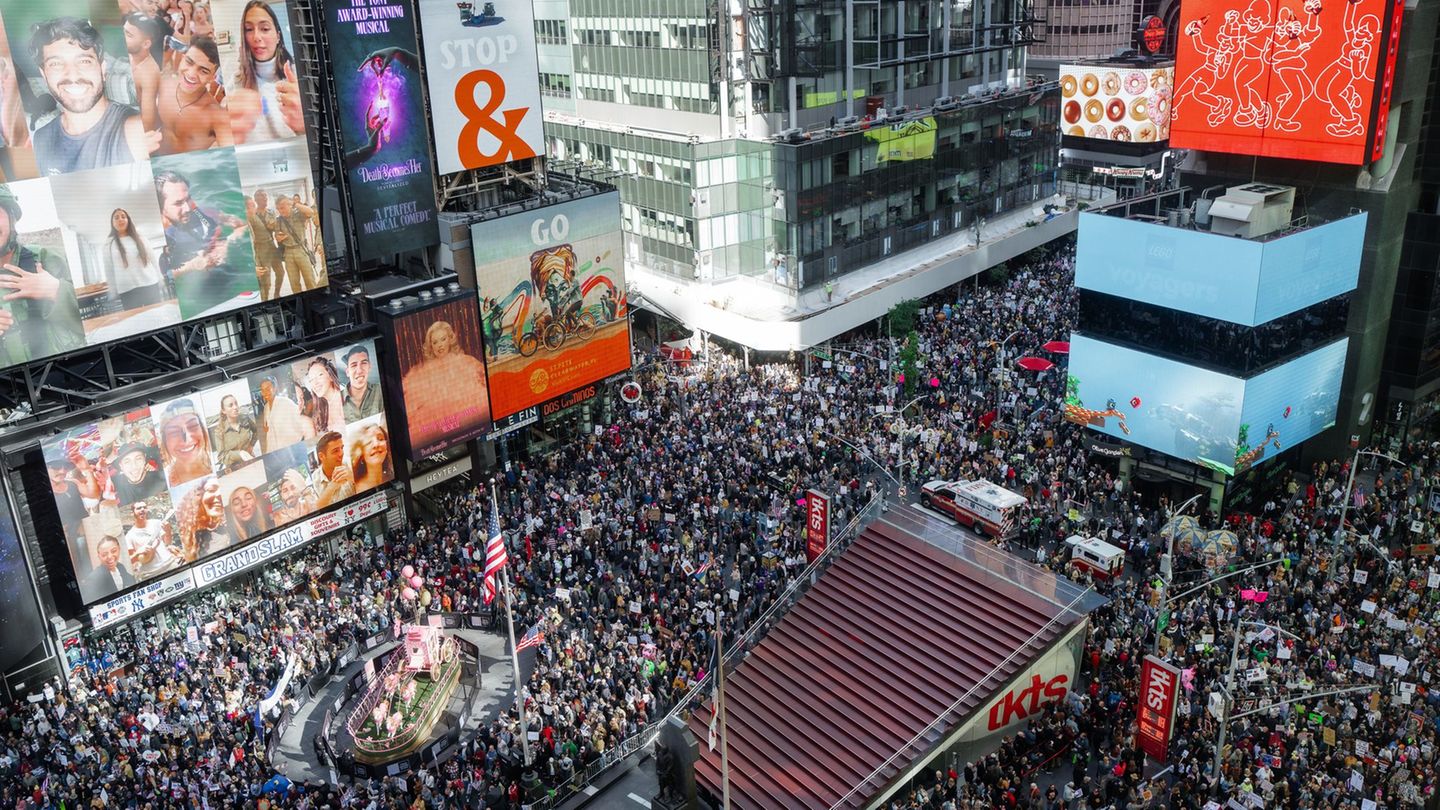Leonardo, an “indigenous”, studied biology and fan of centuries-old stone houses, knows exactly what he has in the Blenio Valley. “Here the starry sky is the brightest and clearest in all of Switzerland,” he tells amazed hikers, whom he leads through the sparsely populated high valley in the north of Ticino. Since there is hardly any light pollution here in the Pro Natura area, the sky sparkles a thousand times over at night when there are no clouds.
The area between Lukmanierpass and small mountain villages like Olivone, Leontica and Semione is Switzerland and yet not. Because on the one hand you want to be Swiss accurate. On the other hand, the Italian shines through so charmingly that you can even be a minute late without getting mercilessly punishing looks.
Everything a little more comfortable
Here, in Italian-speaking Switzerland, Swiss clocks tick a bit differently. But Ticino is not just Locarno and Lugano, with the Italian promenier flair and Gelati culture.
Here in the north, life that used to be sparse on the sunbeds of Switzerland has formed a holiday landscape that is still an insider tip. The mountain bikers know this too, measuring electrically driven distances and landscapes on the narrow village streets that would not be possible elsewhere due to harsh restrictions. You are all welcome here. Because mountain bikers and hikers, nature lovers and gourmets also add value. The north of Ticino can really use every franc. This is also reflected in the “moderate” prices by Swiss standards. Last but not least, “German-Swiss” (as the accurate ones are called here) don’t just come to the south for hiking and cycling, but also for cheap haircuts, shopping and eating out.


Alpine chic at 1500 meters
In the Blenio Valley there is polenta. It usually comes “integral”, i.e. in whole grain mode, but is creamy and delicious. It is accompanied by the typical hard cheeses of the Blenio Valley from alpine dairies called Pertuscio, Casaccia, Gana and Segno. If you don’t want to hike or cycle all of them, you can stop off at the Caseificio Töira, in the Olivone cheese factory. There, the mountain cheeses from each individual alp are collected in the sales display case. They tell mountain stories from 1,500 to 1,900 meters above sea level, about the typical brown cows, whose breed is only called “brown” when asked, about goats and organic dairies and calloused hands that brush the loaves with salt water every week – for many months.
Then Gian Paolo Marche proudly lifts a wheel of cheese of the type whose basic ingredient he scoops behind him in the cheese factory, which looks like a doll’s kitchen. You pay 25 to 35 francs (1 franc = 1.02 euros) per kilo of alpine cheese, which is worth every franc.
Everything still comes from the heart. Because in the Blenio Valley there are only around 300 beds waiting for guests, as Caroline Cima from the local tourist office explains to us. With alpine chic and almost brand new, you descend in the “Campra Alpine Lodge” at 1500 meters above sea level high above Olivone and very close to the super starry sky. The Lukmanier Pass is only a few minutes away by bus and less than 500 meters in altitude. The trendy wooden ambience of the Alpine Lodge with bar and almost gourmet kitchen is not disturbed by the neighboring sports course, where professional athletes and those who want to become one do their cross-country skiing laps in winter. On the top floor of the Campra Lodge you can relax in the sauna and a whirlpool after a hard workout, from which you can see the Rheinwaldhorn glacier (or what’s left of it).


After breakfast with (of course) Bircher muesli and yoghurt from the Campo Blenio Azienda Agricola Croce farm dairy, guide Stefano will be waiting with his e-mountain bikes. It should be 47 kilometers per day and 1500 meters in altitude, which, thanks to high-electric support, will be rolled down by the late afternoon. In between there is a landscape of beauty with a view of ten peaks higher than 3000 meters, which, however, does not reduce the coarse gravel on narrow mountain roads.
Rocking into nothing
Then we have already cycled the attraction “Swing the World” and bravely swing into nothingness. The Ticino couple Elisa Cappelletti and Fabio Balassi set these giant swings in Swiss landscapes. The best view is only to be had
ting if you have overcome any fear of heights by rocking. “Our” swing was in the Nara region, which stretches between 1400 and 2200 meters above sea level in the Blenio.
At noon we stop at the Ristorante Larice in the village of Leontica. It’s Sunday. We observe Italian lunchtime culture from the “nonna” (= grandma) to grandchildren scurrying about who are showered with love.


Pushing bikes allowed
Mountain bike guide Stefano has a surprise in store for the group, which is well fed thanks to polenta and roast beef. Cross a suspension bridge over a frighteningly deep valley to reach the medieval church of San Carlo di Negrentino.
Yes, we can push the bike without being accused of being unsportsmanlike. We are lucky. The Chiesa (church) of San Carlo, with its exuberant medieval frescoes, is open (and only on this one day of the year, we are assured). Otherwise the key would have to be fetched from the sacristan below.
Thanks to e-bikes (charged extra at lunchtime), we survive the 800 meters “home” to the Campra Alpine Lodge and still fall exhausted into the bar chairs. Shortly thereafter, we are served the half-board menu for 45 francs, which is cheap by Swiss standards, with marinated courgettes with local Büscion cheese, roast duck breast on raspberry and potato “mash” with vegetables and the local specialty of bread cake with vanilla ice cream.
Or you can afford a dinner taxi and drive half an hour to Semione, where one of those chic “Grotti” is waiting – namely the “Grotto Canvett” by Alfreda Caprara Chiecchi. Grotti are stone cellars in which cheese and bacon used to be kept as “fridges”. Today, these – finely developed – come up with snack platters, game dishes, pasta and polenta specialties. You drink the region-typical Merlot from “Tazzini” (stoneware cups). You have to get used to the fact that Merlot is naturally also available as a white wine here.
Ticino Tourist Office: info@ticino.ch; ticino.ch
Travel smart, live comfortably
Not only relaxed, but also environmentally friendly you come with the
Railway to the Blenio Valley, which is, roughly speaking, halfway between Chur and Ascona. A train fan has to reckon with a journey time of 8.5 hours and four changes. But there is also the landscape experience of the gorge of the young Rhine river. How to get there (travel home in reverse order): Express train towards Zurich from Linz, change after five and a half hours in Sargans/Switzerland. A quarter of an hour to Chur, the capital of Graubünden. There in the wonderful Rhaetian Railway. In the Benedictine monastery town of Disentis, after a good hour, change to the bus to the Lukmanier Pass. Get on the bus to Olivone and after a few minutes you will reach Campra, where the Alpine Lodge is waiting.
Campra Alpine Lodge & Spa, Zona Campra, 6718 Olivone, campralodge.ch (double room with breakfast from 140 francs, spa 20 francs, gourmet dinner, three courses, 45 francs, here the roast duck breast with mashed raspberries and potatoes)
www.oebb.at
www.sbb.ch
Tourist office: www.ticino.ch, info@ticino.ch
Enjoyment tips
Meal: Grotto Canvett, Semione, Valle di Blenio: 19th century stone house, local specialties, pasta, game, polenta, reservations: info@grottocanvett.ch
www.grottocanvett.ch
Restaurant/pizzeria Il Larice, 6716 Leontica, modern lounge and original wooden house, sun terrace, cheese and bacon platters, polenta dishes, pizzas
Buy cheese: Caseificio Töira, Via Lucomagno 91, 6718 Olivone: all cheeses from the Blenio Valley alpine farmers
www.caseificiotoira.ch
Source: Nachrichten




